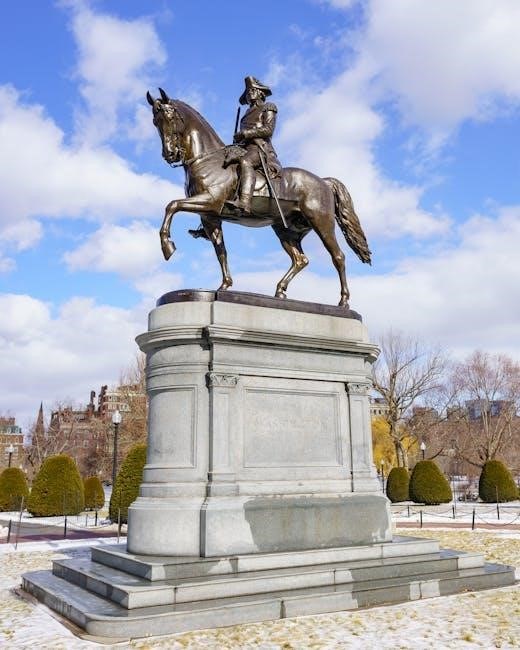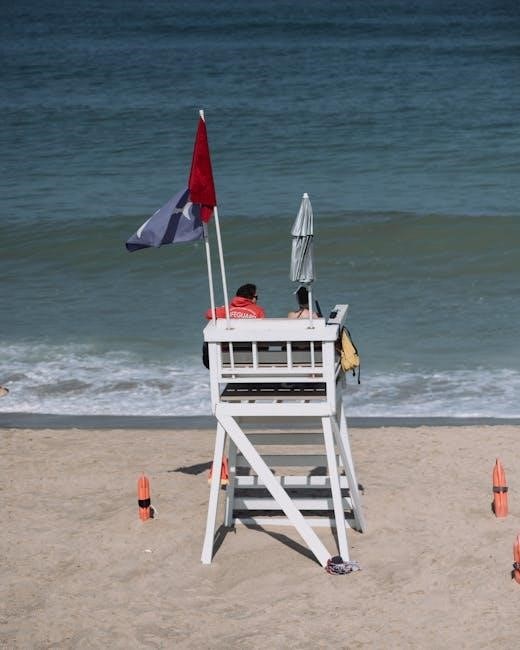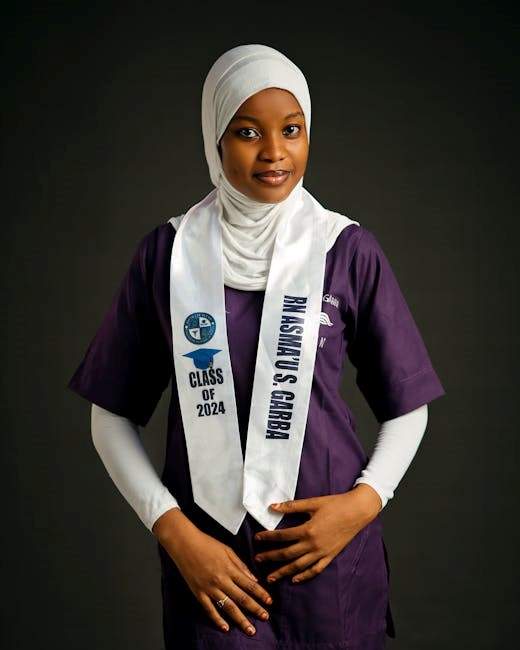mrvp voucher limits 2024 massachusetts pdf

The Massachusetts Rental Voucher Program (MRVP) provides housing assistance to low-income families, with income limits set at 80% of the Area Median Income (AMI).
Voucher limits vary based on household size and composition, ensuring affordability and access to stable housing across the state.
Key updates for 2024 include new payment standards effective March 1, 2024, and revised income limits starting June 10, 2024.
Participants contribute 30% of their income toward rent, with the program covering the remainder up to established ceilings.
Resources like downloadable PDF guides and FAQs are available for applicants and landlords to navigate the program effectively.
Overview of the Massachusetts Rental Voucher Program (MRVP)
The Massachusetts Rental Voucher Program (MRVP) is a state-funded initiative designed to assist low-income families, individuals, and persons with disabilities in securing affordable housing. Similar to the federal Section 8 program, MRVP provides rental vouchers to help participants pay a portion of their rent. The program is administered by the Massachusetts Department of Housing and Community Development (DHCD) and is available to households whose income does not exceed 80% of the Area Median Income (AMI). MRVP offers two types of vouchers: Project-Based Vouchers (PBV) and Tenant-Based Vouchers (TBV), each with specific eligibility criteria and payment standards. The program aims to promote housing stability and self-sufficiency for vulnerable populations across the state.
Importance of Understanding Voucher Limits
Understanding MRVP voucher limits is crucial for both applicants and landlords to navigate the program effectively. These limits determine eligibility, rental assistance amounts, and the maximum rent that can be charged. By knowing the income thresholds and payment standards, participants can identify suitable housing options within their budget. Landlords benefit from clear guidelines on rent ceilings, ensuring fair compensation while participating in the program. Additionally, staying informed about updates, such as the 2024 adjustments, helps all parties comply with regulations and make informed decisions. This knowledge fosters a smooth application process and sustainable housing partnerships across Massachusetts.

Income Limits for MRVP Eligibility in 2024
The MRVP sets income limits at 80% of the Area Median Income (AMI), effective June 10, 2024, adjusting for household size to ensure affordable housing access.
Initial Eligibility Income Limit: 80% AMI
Eligibility for the MRVP requires household income to be at or below 80% of the Area Median Income (AMI). This threshold ensures assistance reaches those most in need. The 80% AMI limit applies to initial eligibility and is adjusted annually to reflect current income levels. Factors such as household size and composition are considered to determine the specific income cap. For example, a household of four in Massachusetts must have an income below the established 80% AMI for their area to qualify. This limit helps maintain program accessibility while adhering to federal and state housing guidelines. Accurate income verification is essential for eligibility determination. Applicants must provide detailed financial documentation to confirm their status. This includes proof of income, assets, and any additional financial resources. The 80% AMI limit serves as the primary benchmark for initial eligibility, ensuring the program effectively targets low-income families and individuals. By adhering to this standard, the MRVP aims to promote housing stability and affordability across Massachusetts.
Household Income Calculation Methods
Household income for MRVP eligibility is calculated based on gross income from all sources, including wages, self-employment, and other regular payments. Adjustments are made for deductions such as child care expenses and medical expenses for elderly or disabled household members. The calculation also considers asset income, though certain assets like retirement accounts may be excluded. Income from all household members is aggregated to determine total household income, which must not exceed the 80% AMI limit. Documentation, such as tax returns and pay stubs, is required to verify income accuracy.
Annual recertification ensures income eligibility is maintained, with adjustments made as household circumstances change. This process helps sustain program integrity and fairness for all participants.
Adjustments for Family Size and Composition
Household income limits for MRVP eligibility are adjusted based on family size and composition to ensure fairness and affordability. Larger households are granted higher income thresholds, reflecting the increased cost of housing for more family members. Adjustments also account for dependents, disabilities, and other household circumstances that may impact income needs. These adjustments align with the program’s goal of providing stable housing for diverse family structures.
The 80% AMI limit is applied proportionally, with larger families having higher maximum income levels. This ensures that all eligible households, regardless of size, can access affordable housing through the MRVP program. Adjustments are standardized to prevent overcrowding and ensure equitable access to housing assistance.

Voucher Types and Their Specific Limits
MRVP offers Project-Based Vouchers (PBVs) and Tenant-Based Vouchers (TBVs), each with distinct rent ceilings and payment standards tailored to household needs and housing market conditions.
Project-Based Voucher (PBV) Limits
Project-Based Vouchers (PBVs) in Massachusetts are tied to specific housing units, ensuring rents remain affordable for low-income families. Limits are set based on unit size and location, with contract rents required to be reasonable. Effective March 1, 2024, new payment standards apply, influencing PBV rent ceilings. These vouchers help stabilize housing costs for participants, who contribute 30% of their income toward rent. The program aligns with broader affordable housing goals, offering a reliable option for residents seeking stable accommodations. Detailed PBV limits are outlined in the 2024 MRVP guidelines, available as downloadable PDF resources for property owners and applicants.
Tenant-Based Voucher (TBV) Limits
Tenant-Based Vouchers (TBVs) provide portable housing assistance, allowing participants to choose rental units within Massachusetts. Voucher limits are determined by household size, income, and rental market conditions. Payment standards vary by location and unit size, ensuring affordability while reflecting local rent levels. Effective March 1, 2024, updated payment standards apply, influencing TBV rent ceilings. Participants must contribute 30% of their income toward rent, with vouchers covering the balance up to the established limits. TBVs offer flexibility, enabling tenants to select housing that meets their needs while adhering to program guidelines. Detailed TBV limits and procedures are outlined in the 2024 MRVP program documentation, available as downloadable resources for applicants and landlords.
Payment Standards and Ceiling Rents
Payment standards under MRVP represent the maximum rent amounts the program will pay for voucher holders, varying by location and unit size. Ceiling rents are established to ensure affordability while reflecting local market rates. Effective March 1, 2024, updated payment standards apply, influencing the maximum rent payments for both PBV and TBV vouchers. These standards help determine the rent portion covered by the voucher, with participants contributing 30% of their income. Ceiling rents are adjusted annually to align with housing market changes, ensuring program sustainability and fairness. Detailed payment standards and ceiling rent charts are available in the 2024 MRVP program documentation, providing clarity for landlords and tenants.

Effective Dates for 2024 Voucher Limits
Key dates for 2024 MRVP voucher limits include March 1 for payment standards, June 10 for income adjustments, and January 1 for Boston-specific updates.
March 1, 2024: New Payment Standards Implementation
Starting March 1, 2024, new payment standards for MRVP vouchers will be implemented statewide, affecting rental assistance levels based on unit size and location.
These standards aim to align voucher amounts with current market rents, ensuring participants can access affordable housing without exceeding program limits.
Housing authorities will adjust payments to landlords accordingly, with detailed charts available for bedroom sizes and regions.
This update reflects market rate adjustments to maintain program effectiveness and tenant affordability across Massachusetts.
June 10, 2024: Updated Income Limits
Effective June 10, 2024, MRVP will implement updated income limits, aligning with federal guidelines to ensure eligibility for low-income households.
The income limit remains at 80% of the Area Median Income (AMI), but adjustments will reflect changes in household size and regional economic conditions.
These updates ensure that vouchers remain accessible to those most in need while maintaining program integrity and fairness.
Applicants and participants should review the revised income thresholds to confirm eligibility and understand how the changes may impact their voucher benefits.
Resources, including downloadable PDF guides, are available to help navigate the updated criteria and application process effectively.
January 1, 2024: Boston Housing Authority Payment Standards
Effective January 1, 2024, the Boston Housing Authority implemented updated payment standards for the MRVP program, reflecting current housing market conditions.
These standards establish the maximum rent payments for voucher holders, ensuring alignment with fair market rents in Boston.
The updated standards apply to all bedroom sizes, providing clarity for landlords and tenants regarding acceptable rent levels under the program.
This adjustment aims to maintain affordability while addressing rising housing costs in the Boston area.
Applicants and landlords are encouraged to review the revised payment standards to understand their implications and ensure compliance.
These changes are part of broader efforts to enhance housing accessibility and stability for low-income families in Massachusetts.

Eligibility Criteria Beyond Income
Eligibility for MRVP includes citizenship status verification, criminal background checks, and household composition requirements, ensuring compliance with program rules and regulations.
Citizenship and Immigration Status
MRVP does not verify citizenship or immigration status, making it accessible to a broader range of applicants. This policy ensures that housing assistance is available to all eligible households, regardless of their immigration status. By not requiring proof of citizenship or immigration status, the program aligns with its goal of providing stable housing to low-income families and individuals in need. This approach also reflects the program’s commitment to inclusivity and equity in housing opportunities across Massachusetts. As a result, applicants are not subjected to additional verification processes related to their citizenship or immigration status, simplifying the eligibility process.
Criminal Background Checks
Criminal background checks are a standard part of the MRVP eligibility process. Applicants and household members may be subject to screening for certain criminal offenses. While the program does not automatically disqualify individuals with a criminal history, specific convictions, such as drug-related offenses or violent crimes, may impact eligibility. The housing authority reviews each case individually, considering the nature and severity of the offense. This ensures that the program balances providing housing opportunities with maintaining safe and stable communities. Applicants are typically required to disclose any criminal history during the application process, and the housing authority may request additional documentation or information as part of the review.
Family Status and Household Requirements
Family status and household requirements play a crucial role in determining eligibility for the MRVP program. Households must meet specific criteria, including income limits and family composition. The program defines a household as individuals who intend to live together as a family. This may include married couples, single parents, and their dependents, as well as unrelated individuals who share housing and resources. The household size directly impacts the voucher limits, with larger families eligible for higher assistance. Applicants must provide documentation to verify household composition, such as birth certificates or legal guardianship papers. The MRVP also considers the relationship of household members to ensure compliance with program guidelines. This ensures equitable distribution of housing resources based on need and family circumstances.

Application and Documentation Process
The MRVP application requires income verification, household composition documentation, and proof of residency. Local housing authorities assist applicants in submitting complete applications for voucher eligibility.
Required Documents for MRVP Application
To apply for the MRVP program, applicants must provide specific documents. These include proof of income, such as pay stubs and tax returns, and documentation of household composition, like birth certificates or Social Security cards. Additional requirements may include divorce or child custody papers, if applicable. Applicants must also provide proof of residency, such as utility bills or a lease agreement. Identification documents, like a valid driver’s license or state ID, are necessary for all household members. In some cases, documentation of childcare expenses or medical expenses may be required to calculate income eligibility. Ensuring all documents are complete and accurate is crucial for a smooth application process.
Steps to Apply for MRVP Vouchers
Applicants must first review eligibility criteria and gather required documents. Next, they complete and submit the MRVP application form, available online or through local housing authorities. Once submitted, applications are reviewed for eligibility, with priority given to certain groups. Applicants are then placed on a waiting list. When a voucher becomes available, participants receive it and must find eligible housing within a specified timeframe. Rental properties must meet program standards and pass inspections. After securing housing, participants sign a lease, and the MRVP pays a portion of the rent directly to the landlord. Regular recertification is required to maintain eligibility.
Role of Local Housing Authorities
Local housing authorities play a crucial role in administering the MRVP program. They process applications, determine eligibility, and manage voucher distribution. Authorities ensure compliance with program rules and regulations. They also maintain waiting lists, prioritize applicants, and assist with housing searches. Local housing authorities conduct inspections to ensure rental properties meet safety and quality standards. They provide guidance to both tenants and landlords, resolving issues and addressing concerns. Additionally, they handle payments to landlords and monitor tenant rent contributions. Their oversight ensures the program operates efficiently and effectively, helping low-income families access affordable housing in Massachusetts.

Payment Standards and Rent Calculations
Payment standards for MRVP vouchers are set annually, with ceiling rents effective March 1, 2024. Boston Housing Authority applies specific standards, ensuring reasonable rent calculations align with program limits.
Maximum Rent Payments Under MRVP
The MRVP program sets maximum rent payments based on established payment standards and ceiling rents. Effective March 1, 2024, these standards ensure affordability for participants. The Boston Housing Authority applies specific payment standards starting January 1, 2024. Participants contribute 30% of their income toward rent, with MRVP covering the remainder up to the ceiling. Maximum rent payments vary by voucher type and household size, ensuring alignment with local market rates. These limits are designed to prevent excessive rent burdens while maintaining program affordability. Payment standards are regularly updated to reflect housing market changes, ensuring reasonable and sustainable rent levels for all participants.
Tenant Rent Contribution: 30% Rule
Under the MRVP program, participants are required to contribute at least 30% of their gross income toward rent. This rule ensures affordability and prevents excessive financial burden on tenants. The 30% contribution is calculated based on the household’s income, which is verified during the eligibility process. MRVP covers the remaining portion of the rent up to the established payment standards or ceiling rents. This rule applies universally to all voucher types and household sizes, promoting stability and preventing rent-related hardships. The program ensures that tenants’ contributions remain manageable while maintaining alignment with the overall voucher limits and rent ceilings for 2024.
Reasonableness of Rents
The MRVP program ensures that rents charged under the voucher are reasonable and comparable to similar unassisted units in the area. This requirement prevents excessive rent charges and ensures cost-effectiveness. Local housing authorities review rent reasonableness by comparing the requested rent to market rates for comparable properties. This process applies to both new leases and lease renewals. Landlords must provide documentation to justify rent amounts, and rents must align with MRVP payment standards. The program also considers factors like property condition, location, and amenities. Ensuring rent reasonableness helps maintain program efficiency and fairness for both tenants and landlords, aligning with the overall goals of affordable housing. This principle is central to MRVP’s operational guidelines for 2024.

Program Administration and Oversight
The Massachusetts Department of Housing and Community Development (DHCD) manages and oversees the MRVP, ensuring compliance with federal and state regulations while promoting program efficiency and effectiveness. Key responsibilities include monitoring voucher usage, enforcing rent reasonableness, and conducting regular audits to maintain accountability. The DHCD also provides guidance to local housing authorities, helping them implement program policies accurately and consistently across the state. This oversight ensures that the MRVP operates transparently and delivers affordable housing opportunities to eligible households in Massachusetts throughout 2024.
Role of the Massachusetts Department of Housing and Community Development (DHCD)
The Massachusetts Department of Housing and Community Development (DHCD) plays a central role in administering the MRVP, ensuring program integrity and effectiveness. The DHCD sets payment standards, establishes voucher limits, and monitors compliance with state and federal regulations. It also provides guidance to local housing authorities, helping them implement program policies accurately. The DHCD ensures that voucher limits align with housing market conditions and household needs, while promoting equitable access to affordable housing. Additionally, the department oversees the distribution of vouchers and manages program funds to maximize the number of families served. Its oversight ensures the MRVP operates efficiently and meets its goals in 2024;
Monitoring and Compliance Requirements
The Massachusetts Rental Voucher Program (MRVP) requires rigorous monitoring to ensure compliance with program rules and regulations. Local housing authorities and the DHCD conduct regular reviews of participant eligibility, rent payments, and property conditions. Annual recertification of household income and family composition is mandatory to maintain voucher eligibility. Properties must meet housing quality standards, and landlords are required to submit documentation for rent reasonableness. Failure to comply with these requirements may result in penalties, including voucher termination. The program also audits payment standards and ceiling rents to ensure alignment with market rates. These measures help maintain program integrity and ensure resources are used effectively to support low-income families in Massachusetts.

Annual Recertification Process
The MRVP program requires an annual recertification to ensure ongoing eligibility and compliance with program guidelines. Participants must submit updated documentation, including proof of income, household composition, and other eligibility factors. This process typically occurs on the anniversary of voucher issuance and involves a review of household income to determine continued eligibility. Failure to complete recertification by the specified deadline may result in loss of voucher benefits. The recertification process ensures that assistance is targeted to those who need it most and that program resources are allocated efficiently. It also allows participants to update their information, reflecting any changes in income or family status that may affect their benefit level.

Resources for Applicants and Landlords
MRVP offers downloadable PDF resources, including property owner FAQs, application forms, and program guidelines, to assist applicants and landlords in understanding program requirements and benefits effectively.
MRVP Forms and Application Materials
The Massachusetts Rental Voucher Program (MRVP) provides essential forms and application materials for both applicants and landlords. These documents are available as downloadable PDFs and include detailed instructions, eligibility criteria, and required paperwork. Applicants can access forms for income verification, household composition, and voucher requests. Landlords also benefit from specific documents outlining payment standards and lease agreements. These materials are regularly updated to reflect program changes, ensuring compliance with 2024 guidelines. Prospective participants are encouraged to use the most recent versions of these forms to avoid delays in processing. The MRVP website and local housing authorities are key sources for accessing these resources.
Property Owner FAQs and Guidelines
Property owners participating in the MRVP can access comprehensive FAQs and guidelines to navigate the program effectively. These resources provide detailed information on rent calculation, voucher limits, and contract requirements. FAQs address common concerns, such as payment standards, lease agreements, and tenant screening. Guidelines outline the steps for submitting required documentation and understanding rental subsidy payments. Additionally, these materials clarify the process for resolving disputes and maintaining compliance with program rules. By referencing these documents, landlords can ensure smooth participation in the MRVP, fostering a positive partnership between property owners and the state to provide affordable housing solutions.
Downloadable PDF Resources
Downloadable PDF resources for the MRVP program provide detailed information on voucher limits, payment standards, and eligibility criteria for 2024. These documents include charts outlining income limits based on household size and AMI percentages. Additionally, PDF guides cover payment standards effective March 1, 2024, and updated income limits starting June 10, 2024. Property owners can access FAQs and application materials in PDF format, ensuring clarity on program requirements. These resources are essential for applicants, landlords, and administrators to understand and comply with MRVP regulations. By referring to these official PDFs, stakeholders can stay informed about the latest updates and ensure accurate program implementation. Visit the MRVP website to access these downloadable resources.
The MRVP voucher limits for 2024 in Massachusetts are designed to support affordable housing, with updated income limits and payment standards ensuring equitable access for eligible households.
The MRVP voucher limits for 2024 in Massachusetts are set at 80% of the Area Median Income (AMI), with no consideration of citizenship or immigration status.
Eligible households pay 30% of their income toward rent, while the program covers the remaining amount up to established payment standards and ceiling rents.
Key updates include new payment standards effective March 1, 2024, and revised income limits starting June 10, 2024, ensuring affordability and access to housing.
Both Project-Based Vouchers (PBV) and Tenant-Based Vouchers (TBV) have specific limits, with rents deemed reasonable based on local market rates.
The program is administered by the Massachusetts Department of Housing and Community Development (DHCD), with annual recertification required for continued eligibility.
Resources like downloadable PDF guides, application forms, and FAQs are available to assist applicants and landlords in navigating the program effectively.
Importance of Staying Informed
Staying informed about MRVP voucher limits in 2024 is crucial for both applicants and landlords to navigate the program effectively.
Updates to payment standards, income limits, and eligibility criteria can significantly impact housing opportunities and program participation.
Regularly reviewing official resources, such as downloadable PDF guides and FAQs, ensures access to the most current information.
Understanding changes in voucher limits and rent calculations helps participants make informed decisions about their housing options.
Timely awareness of key dates, like March 1 and June 10, 2024, ensures compliance and maximizes the benefits of the program.
By staying informed, individuals can efficiently utilize the resources provided by the Massachusetts Department of Housing and Community Development (DHCD).